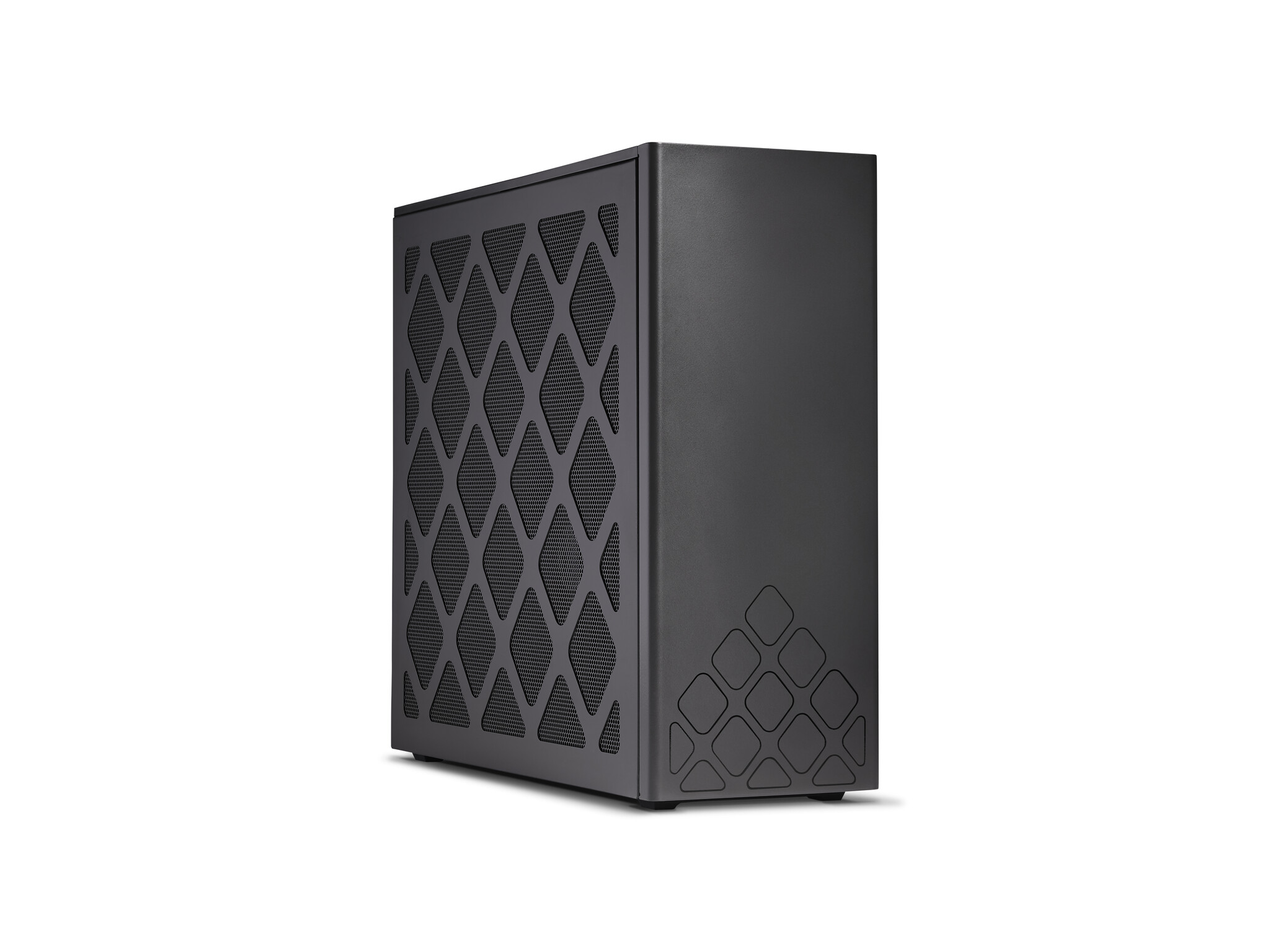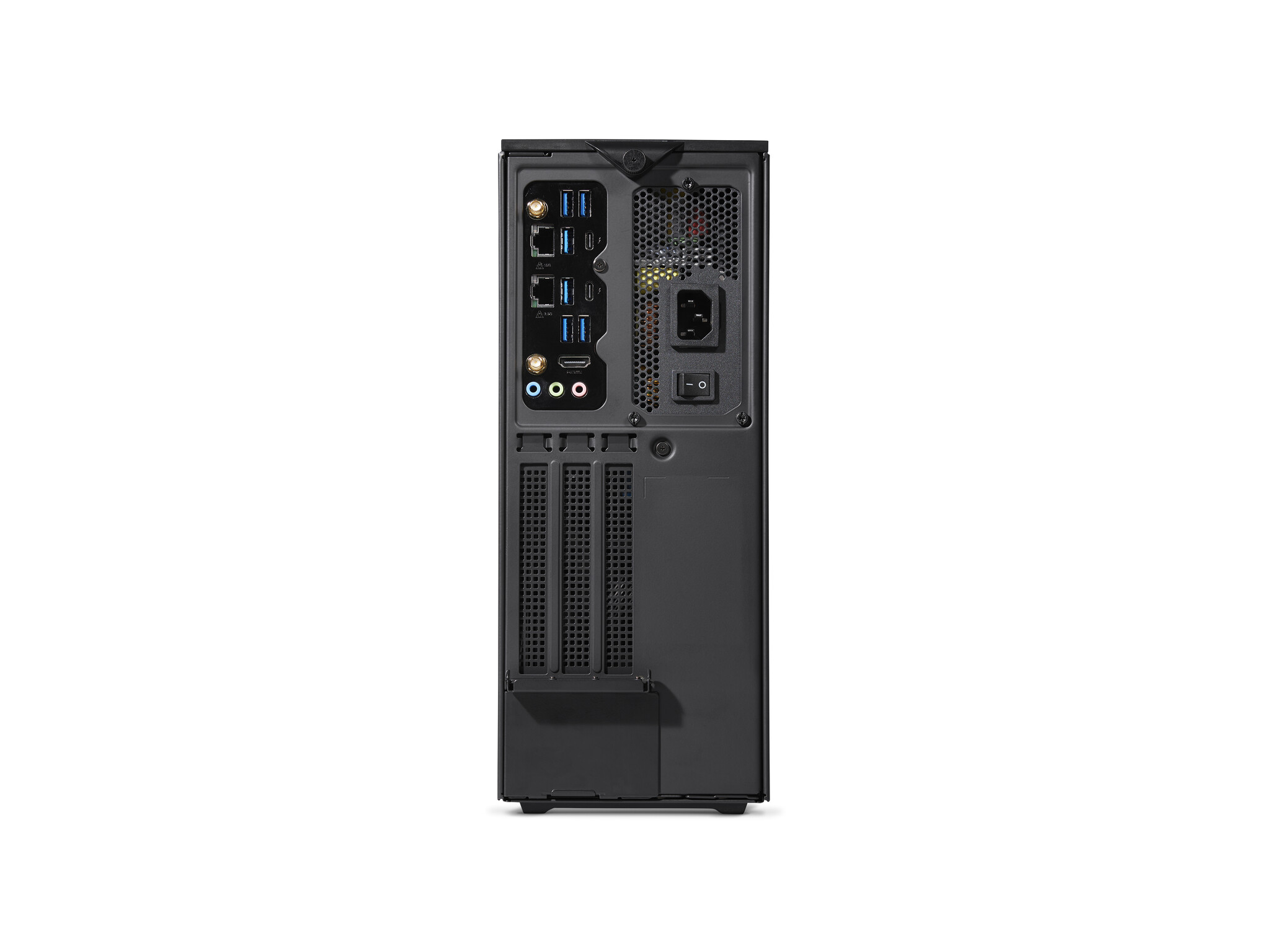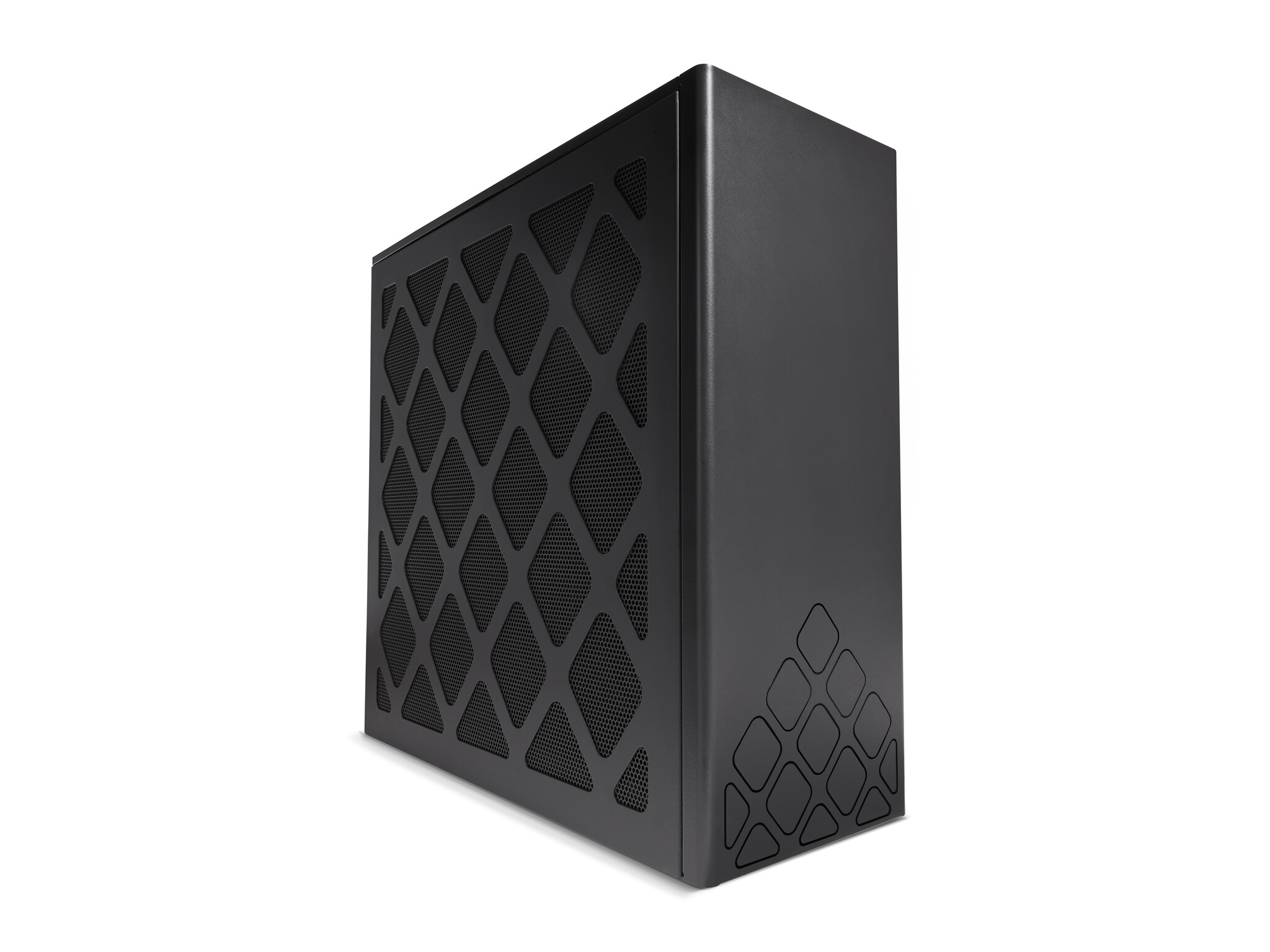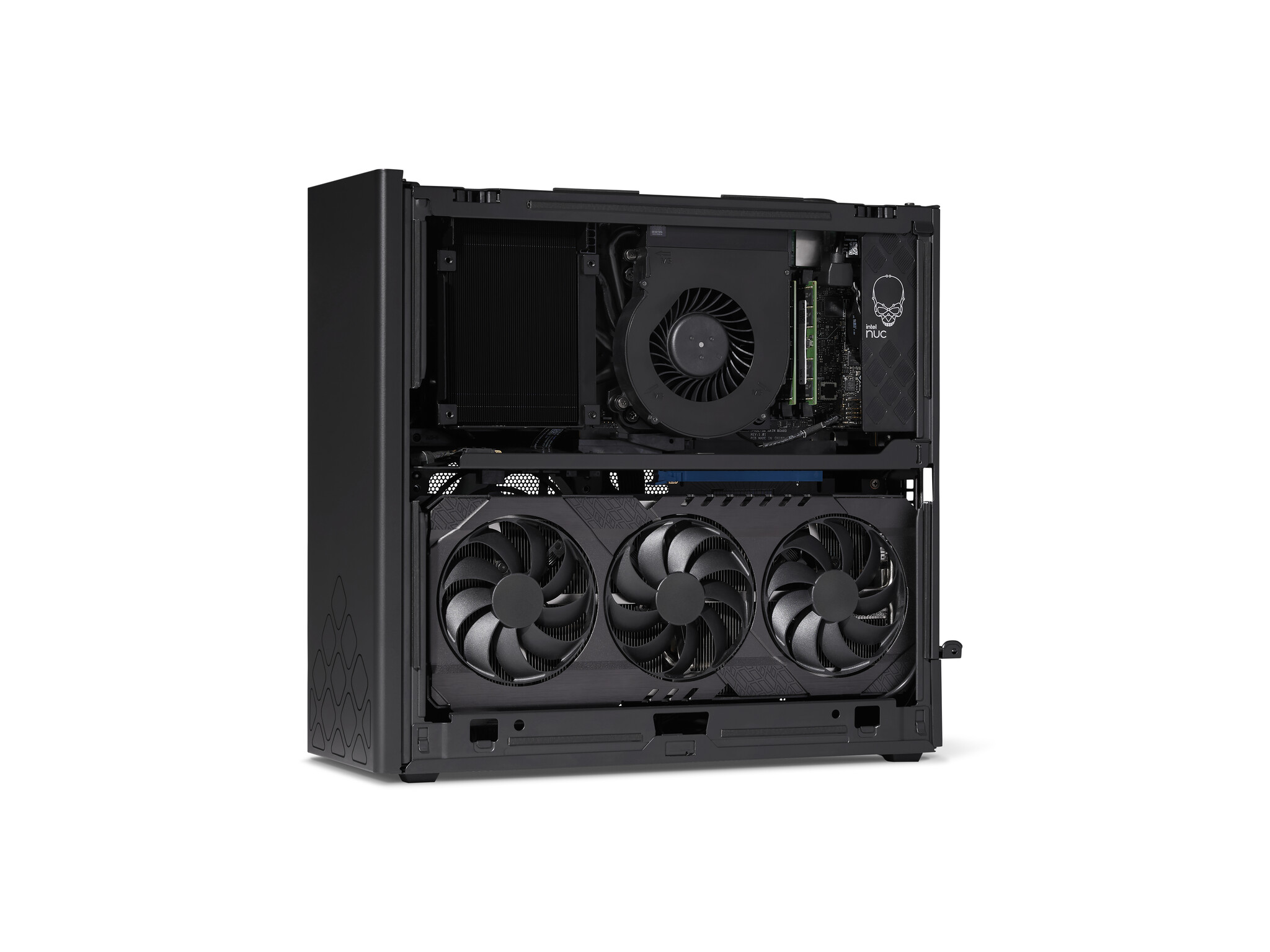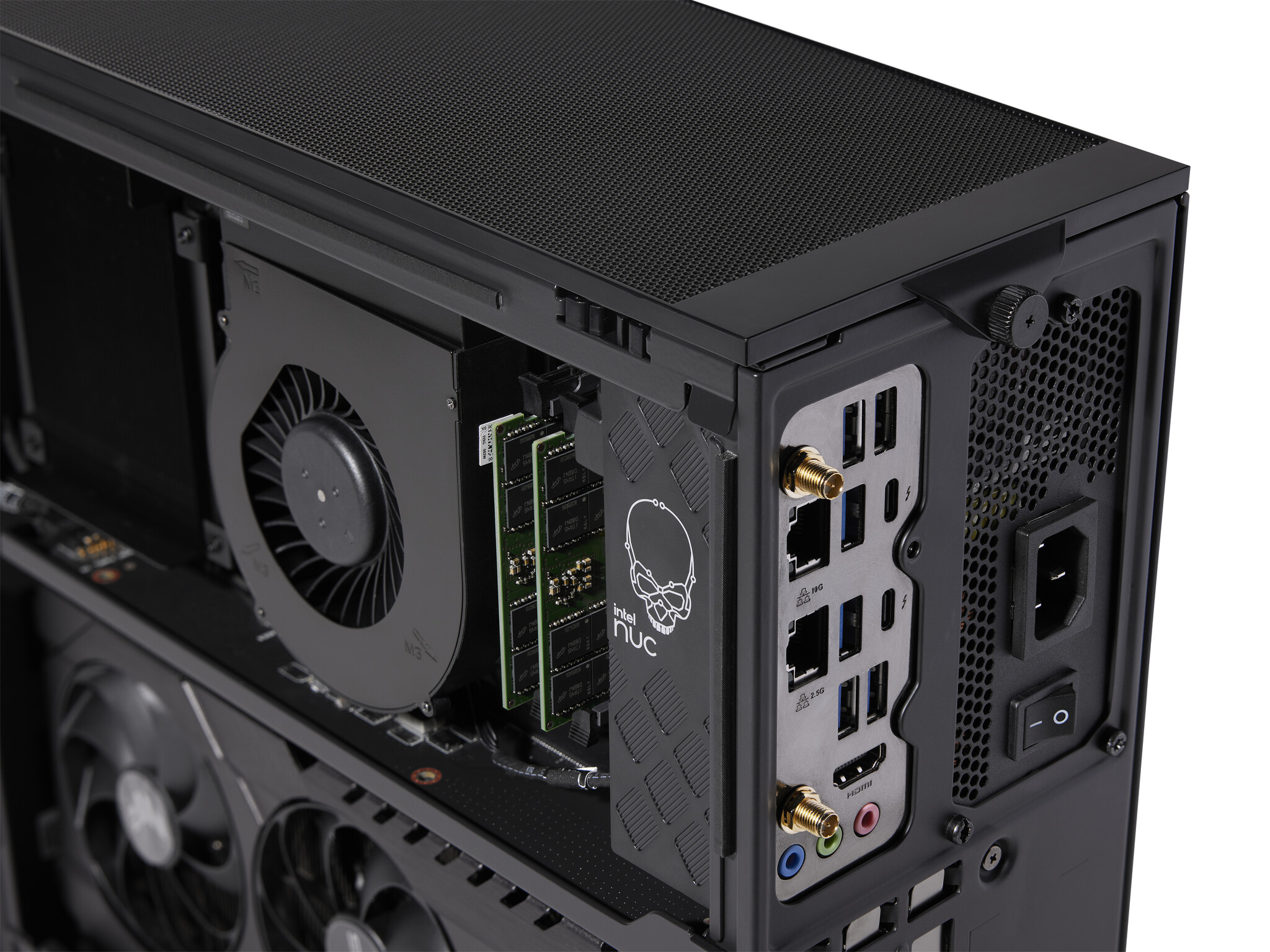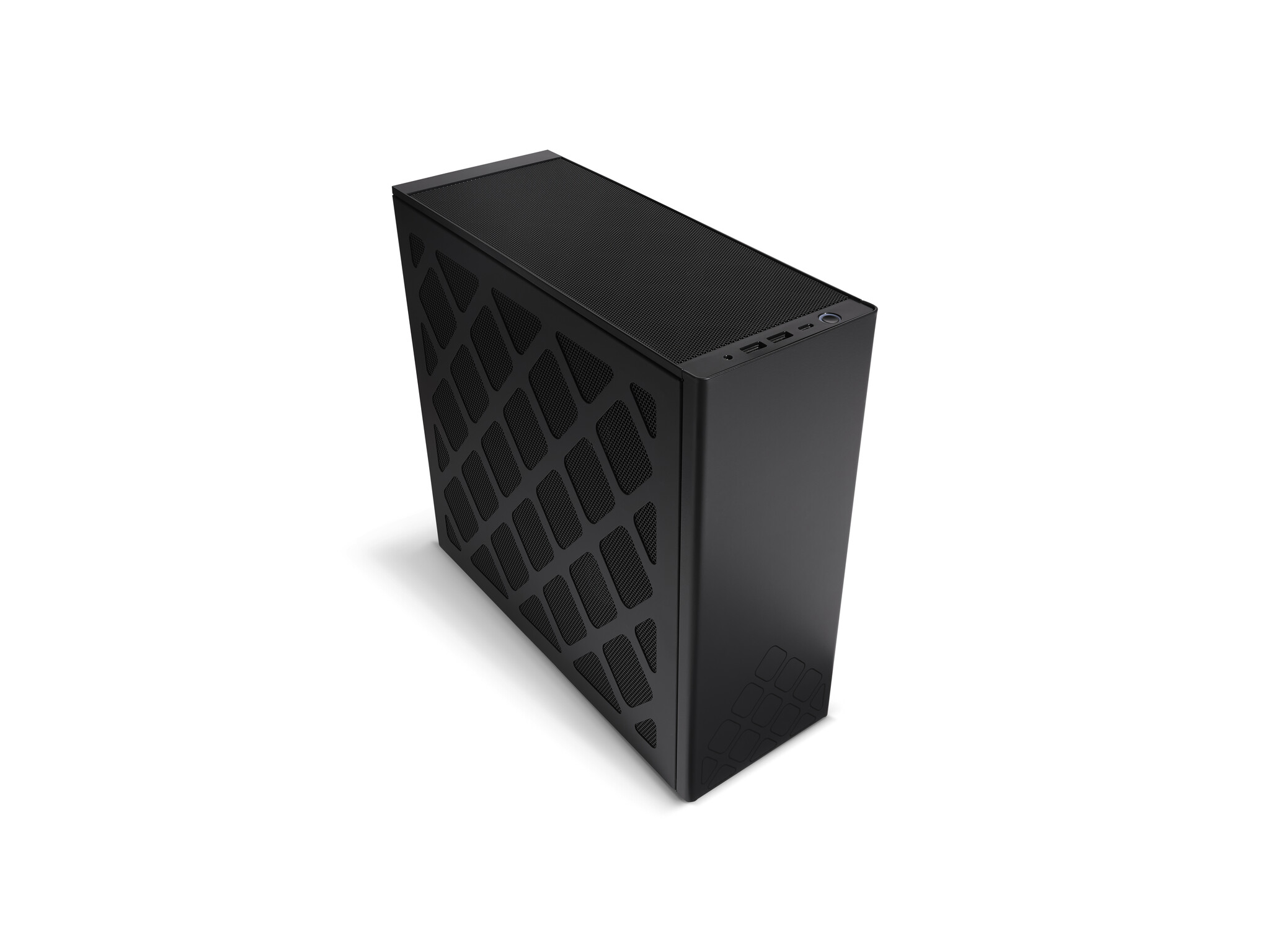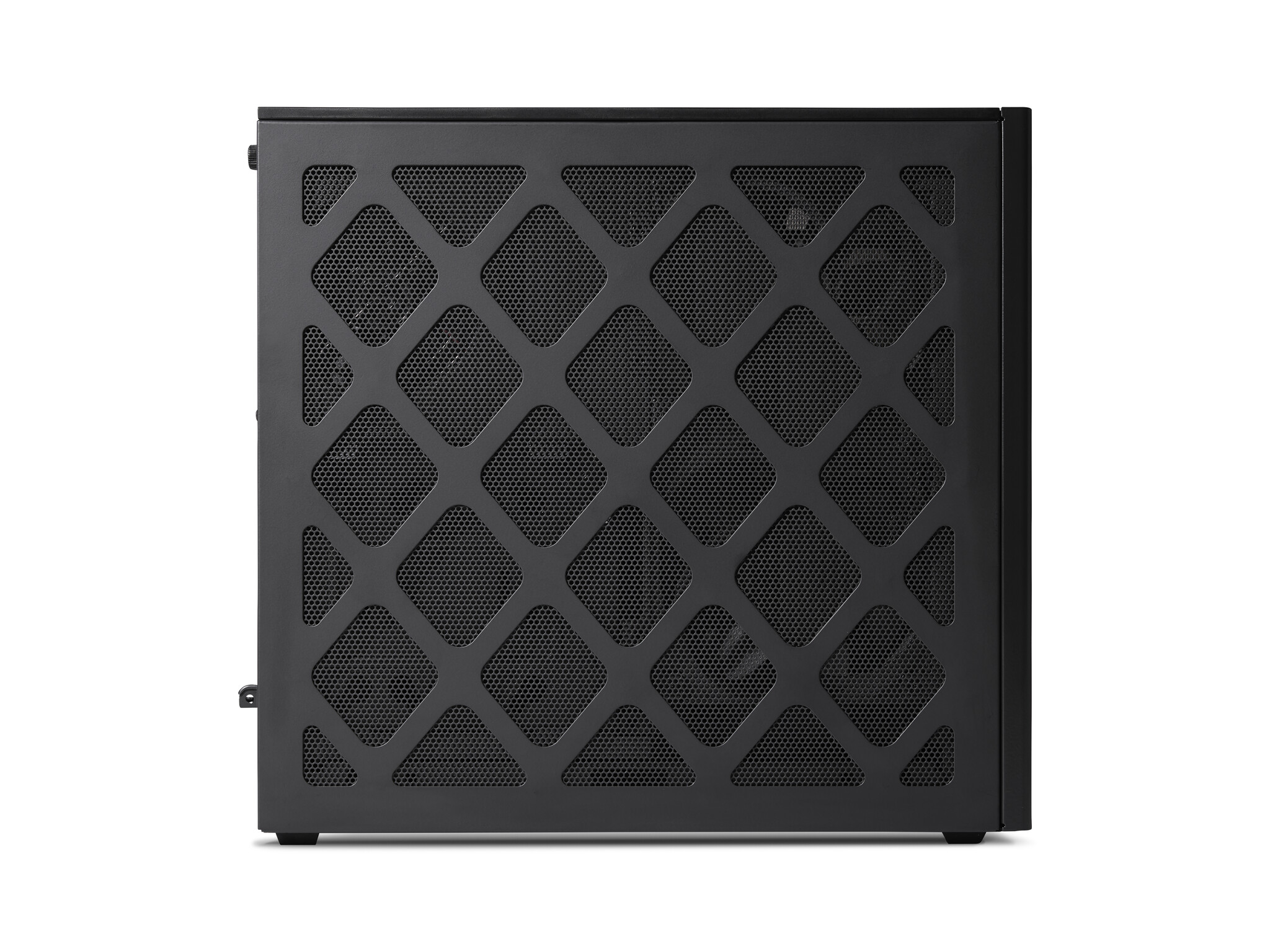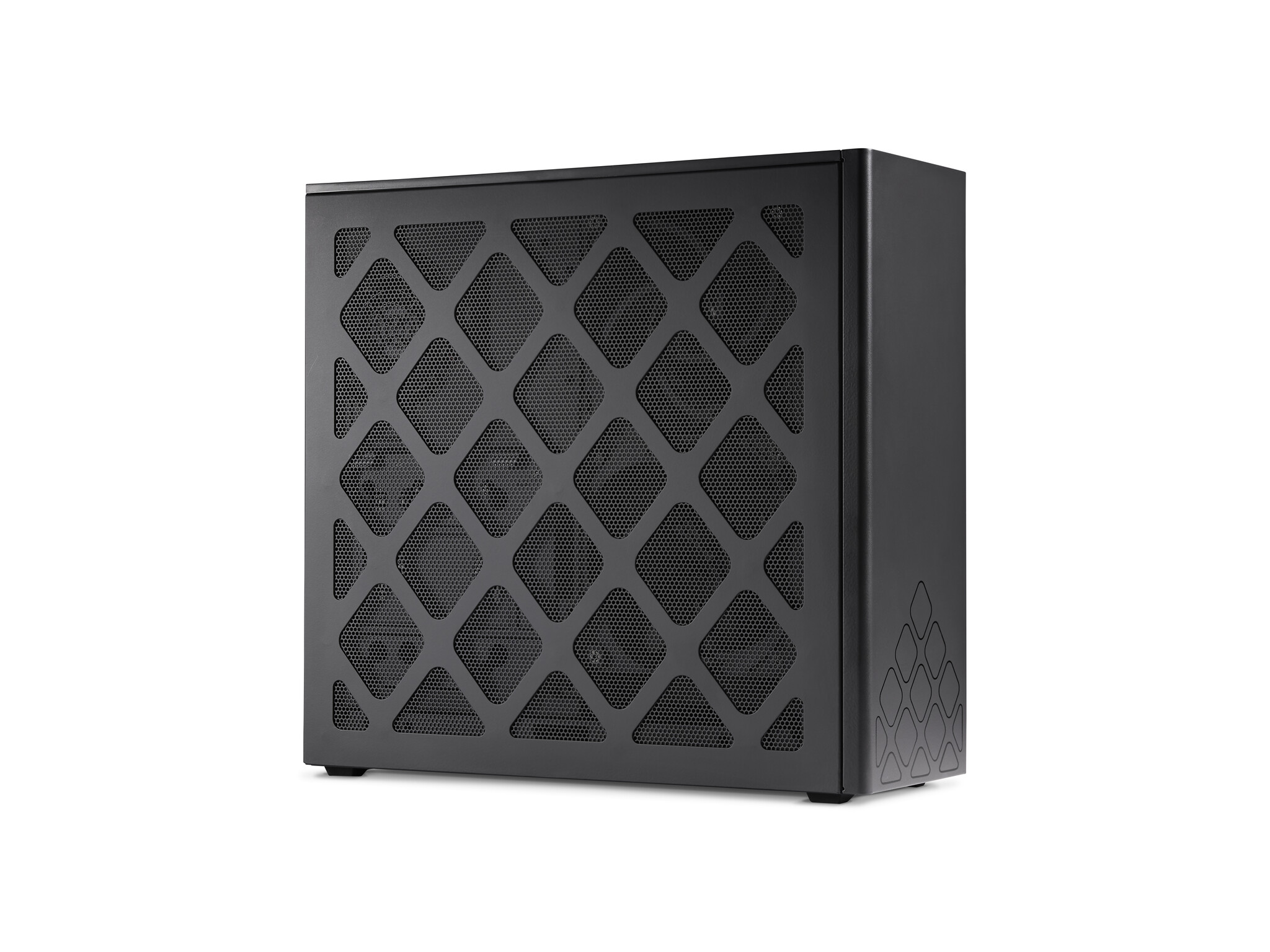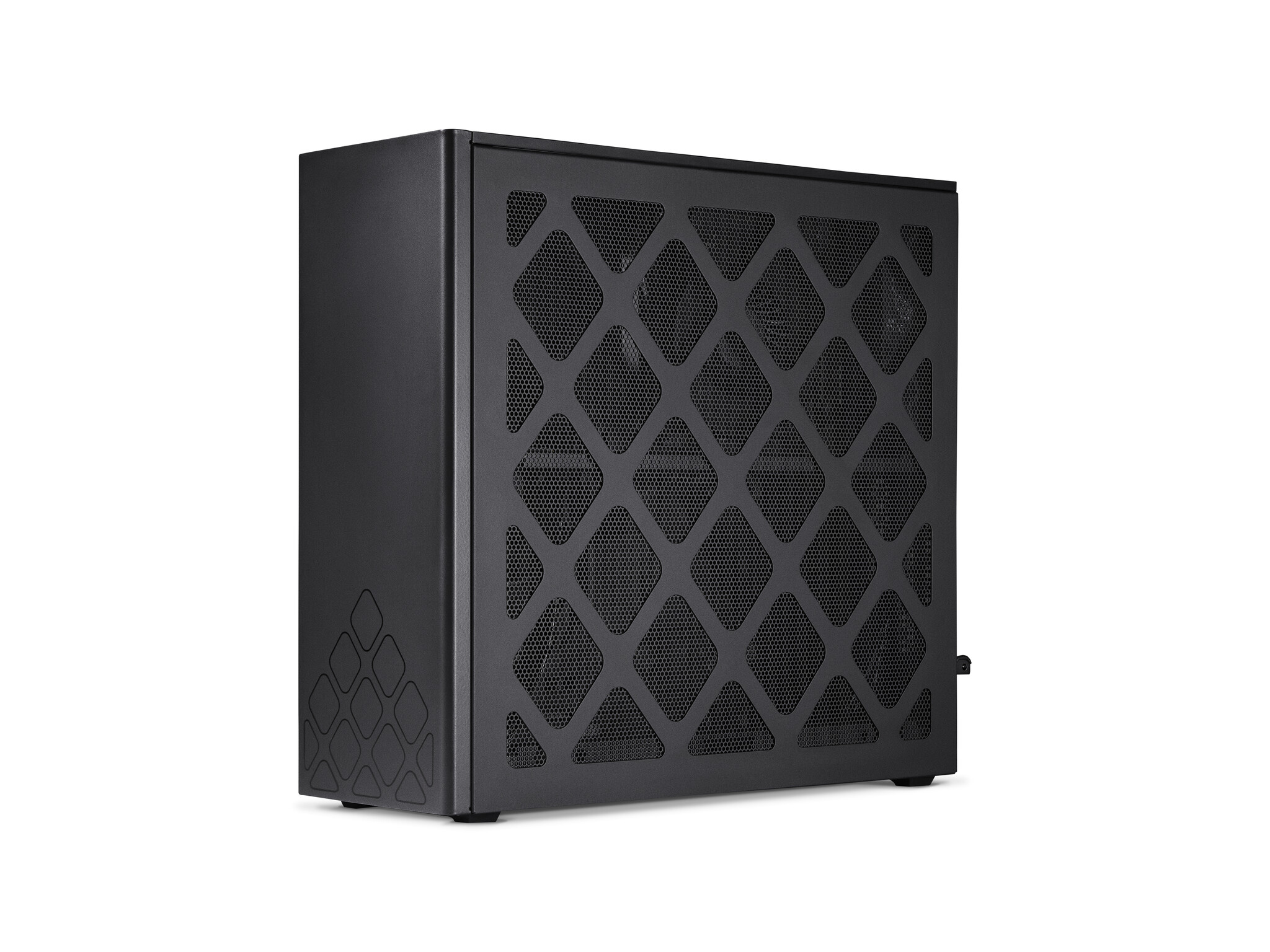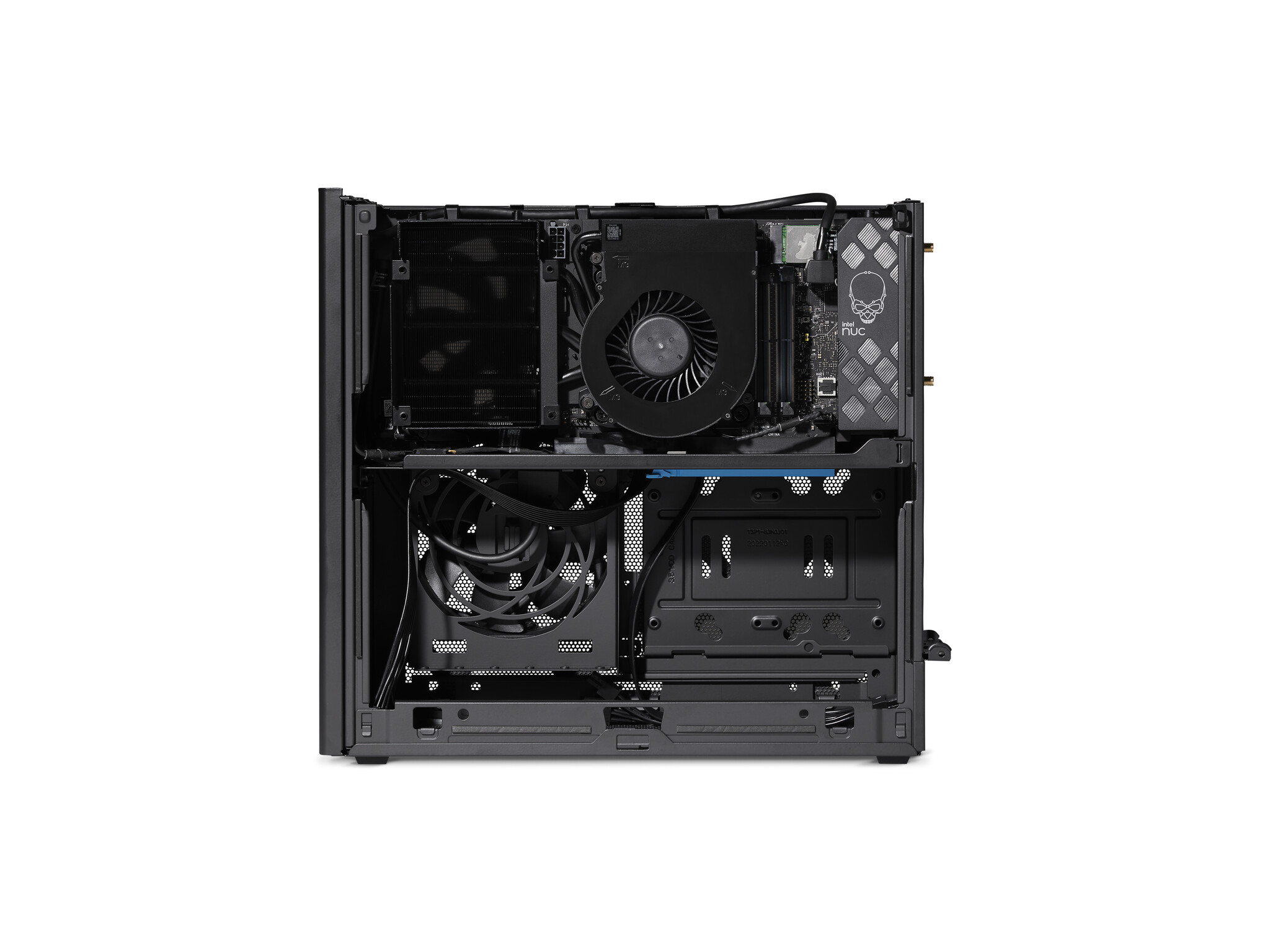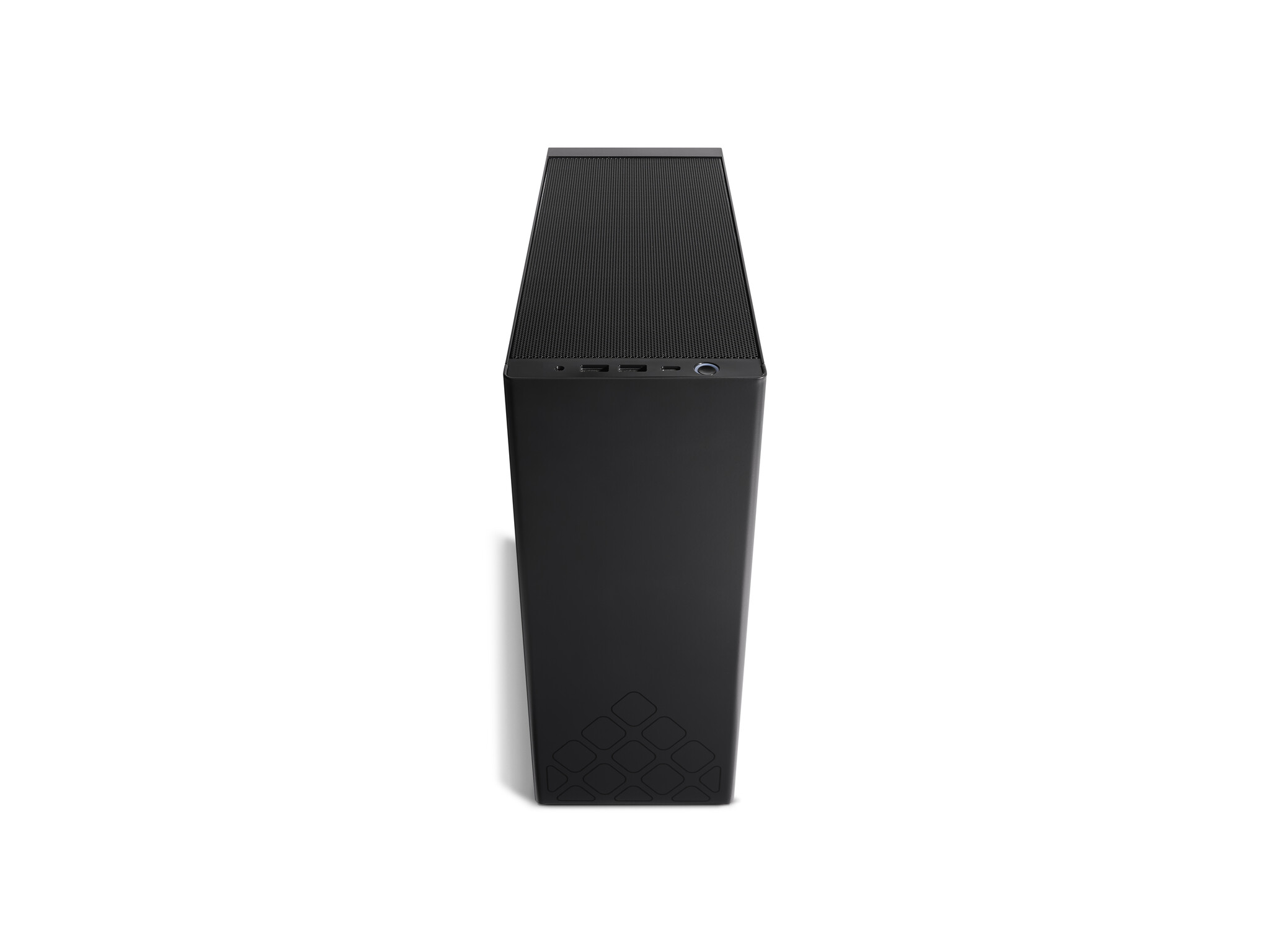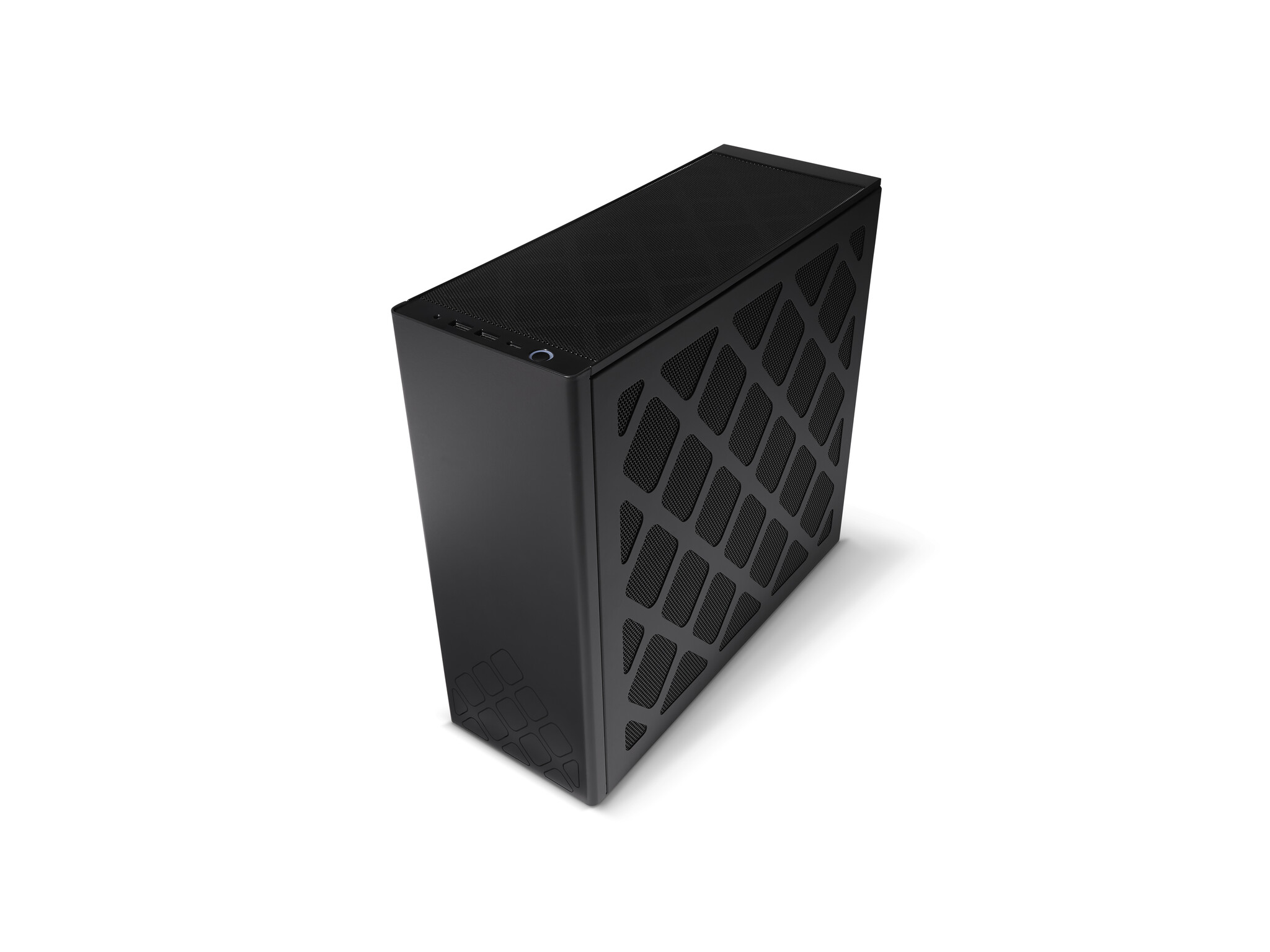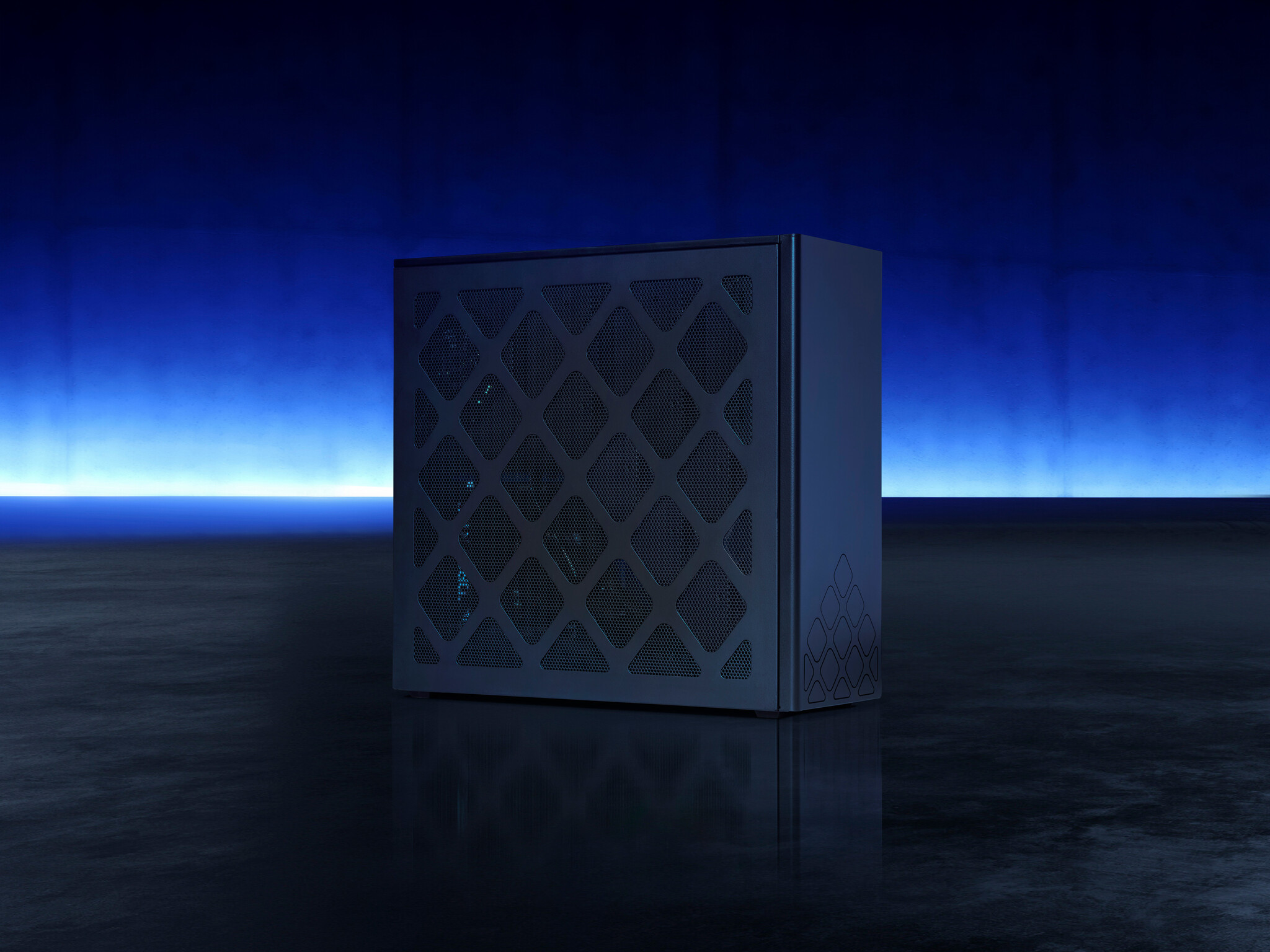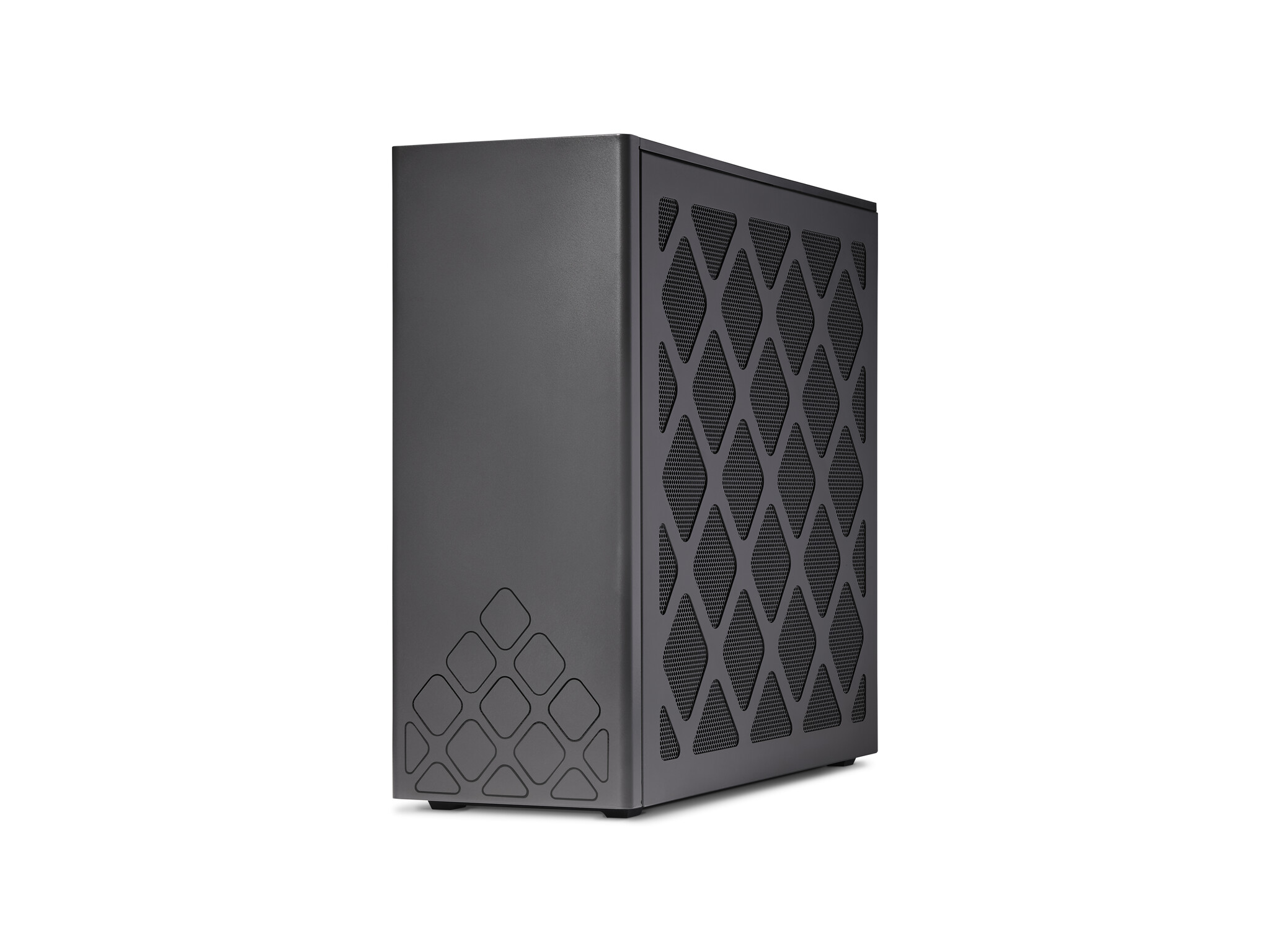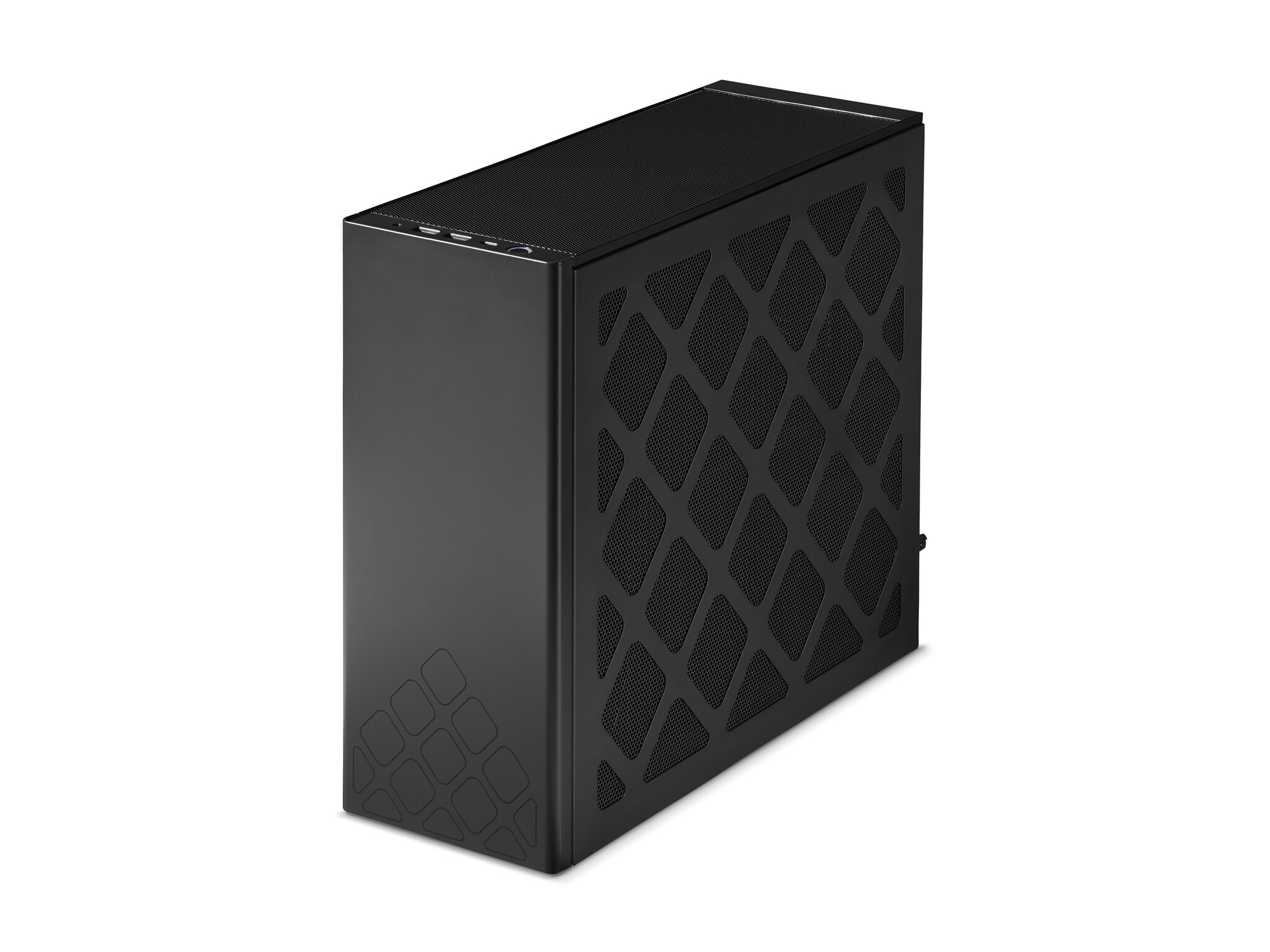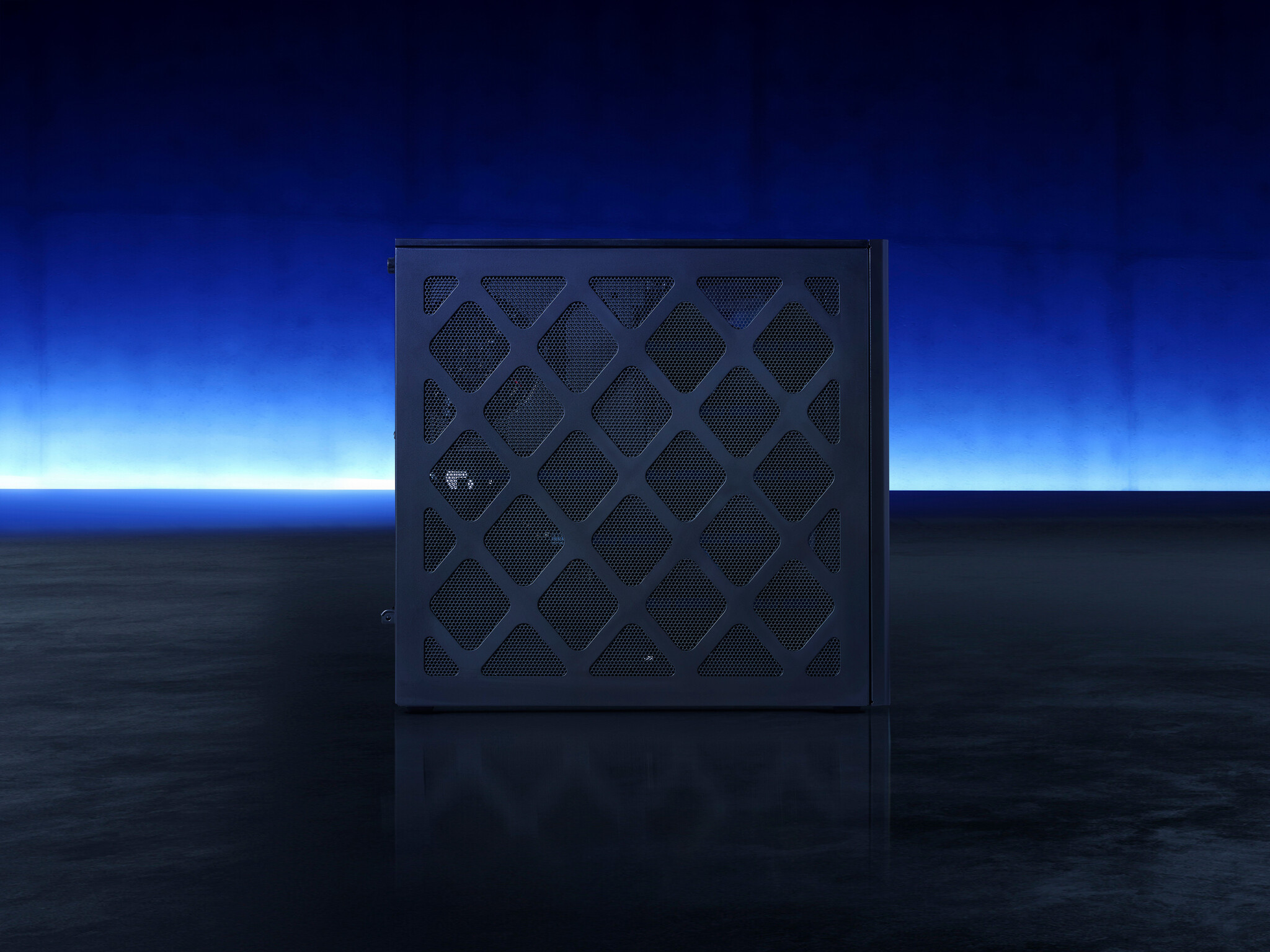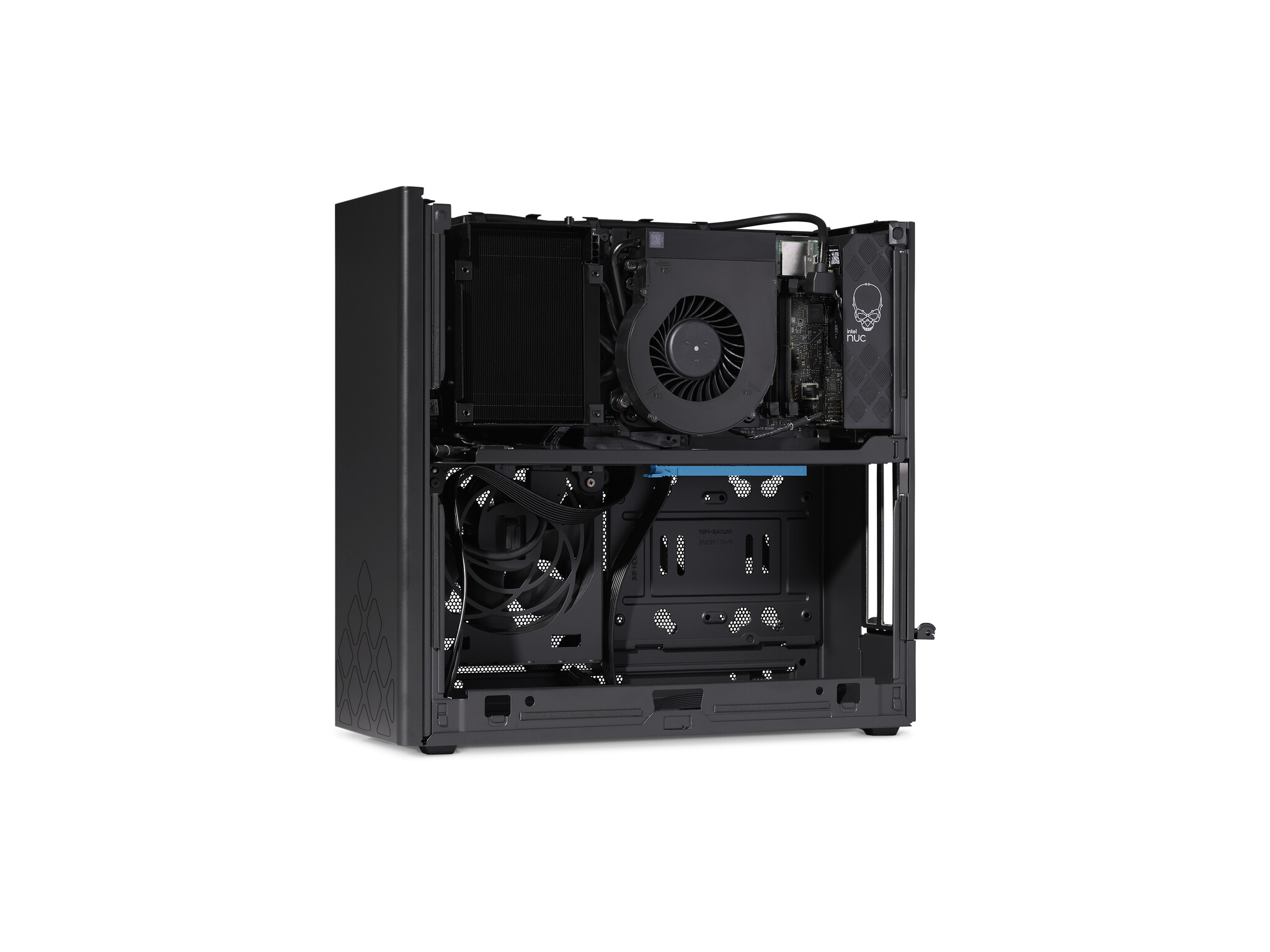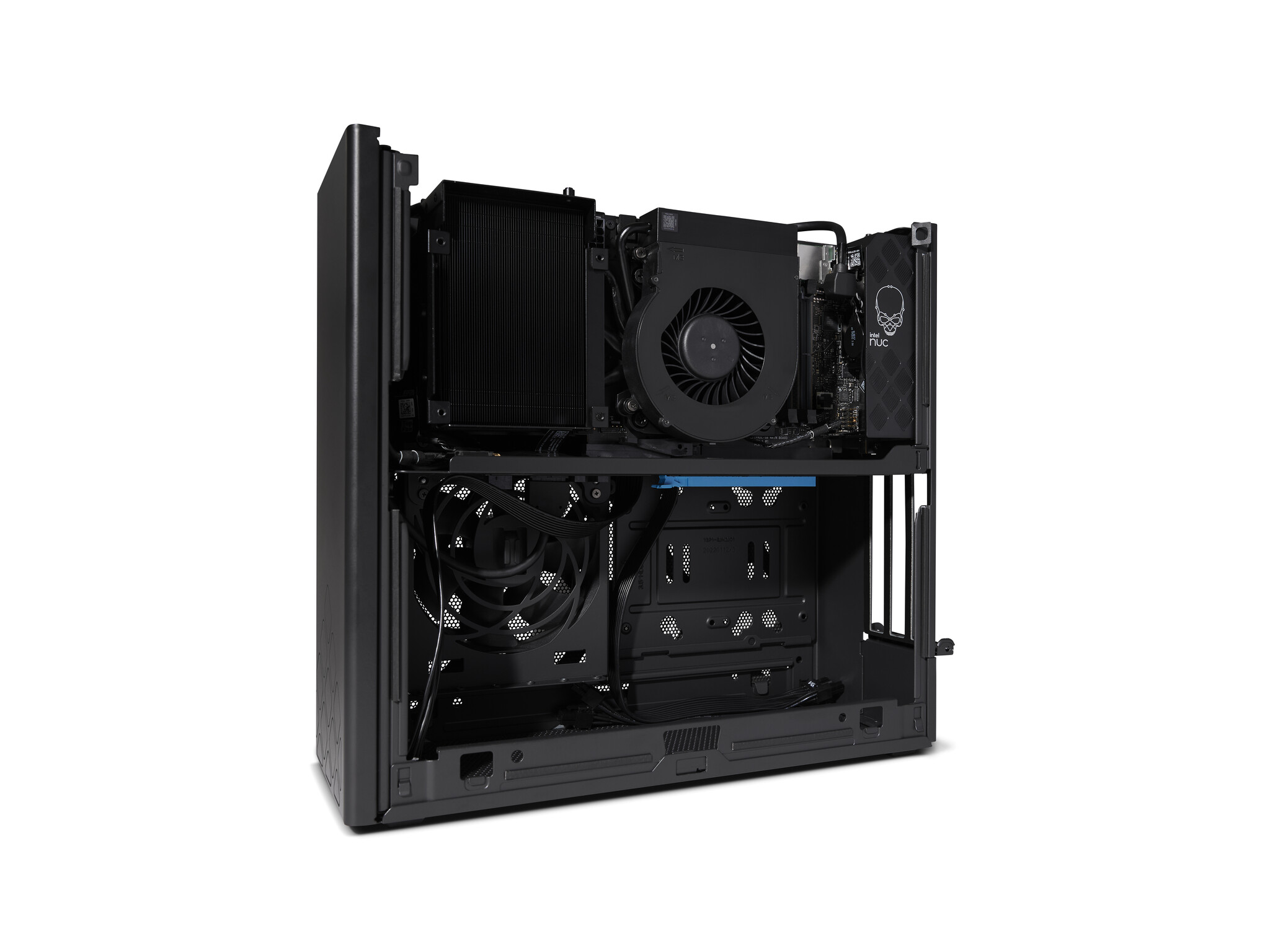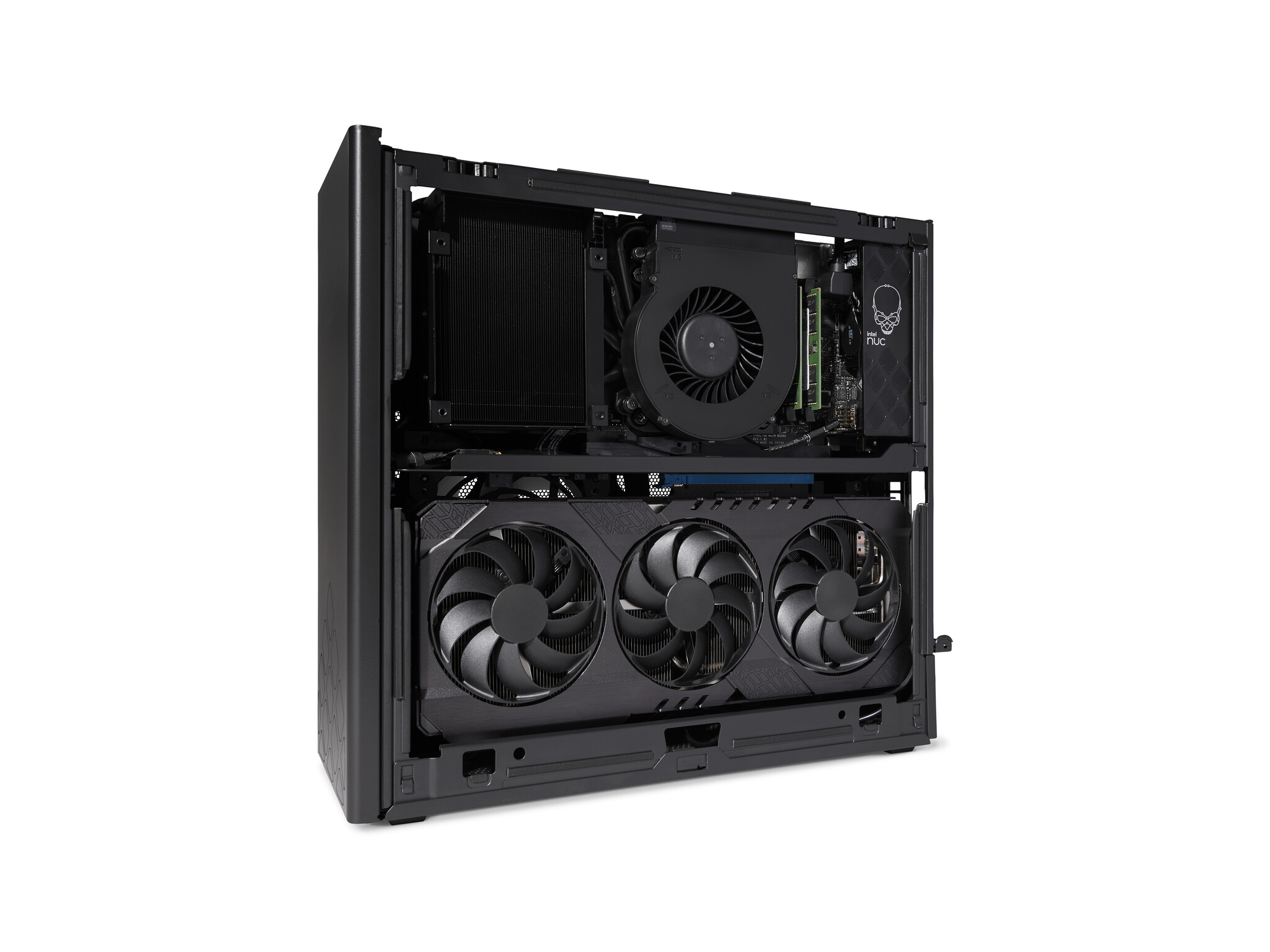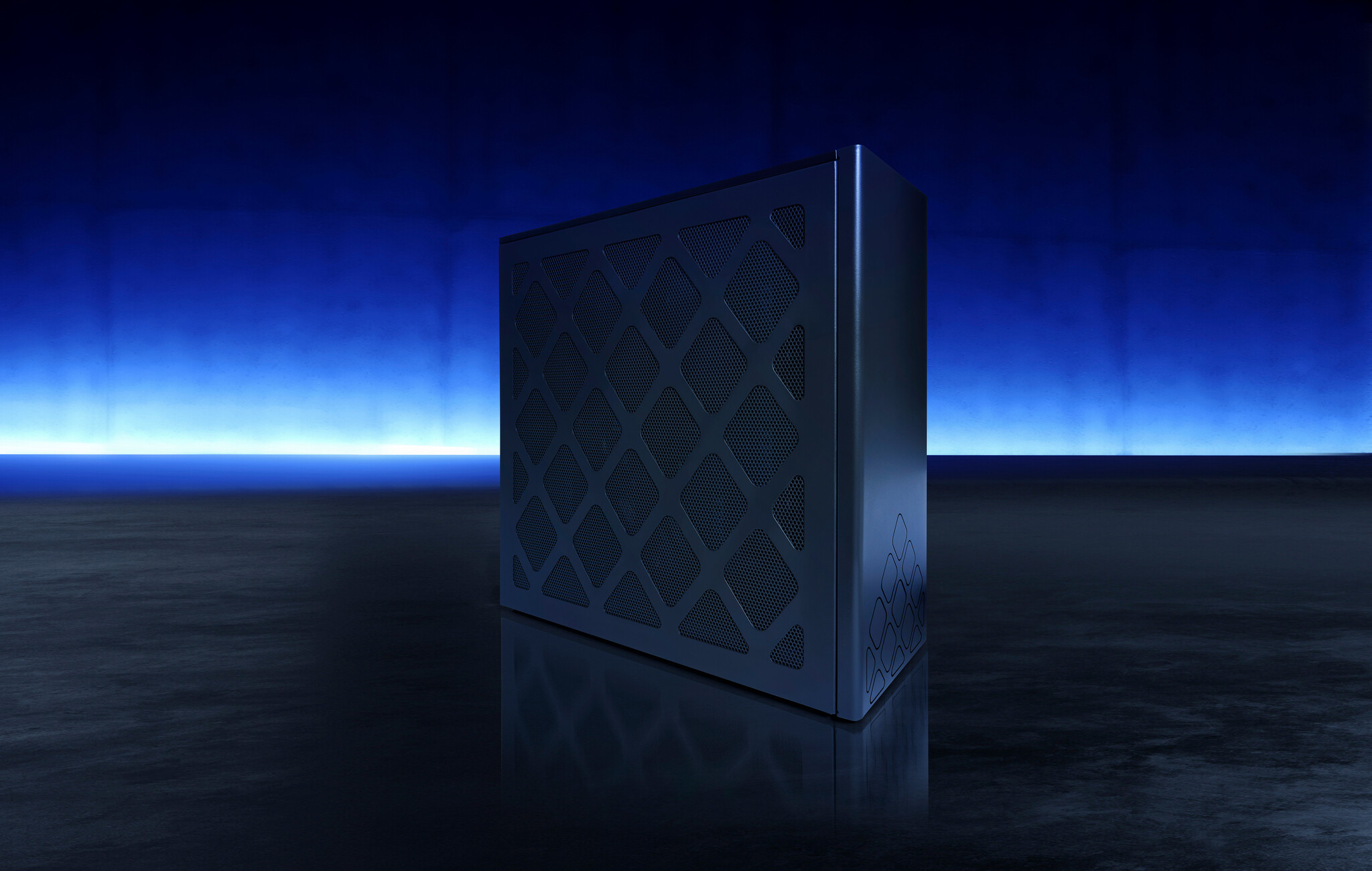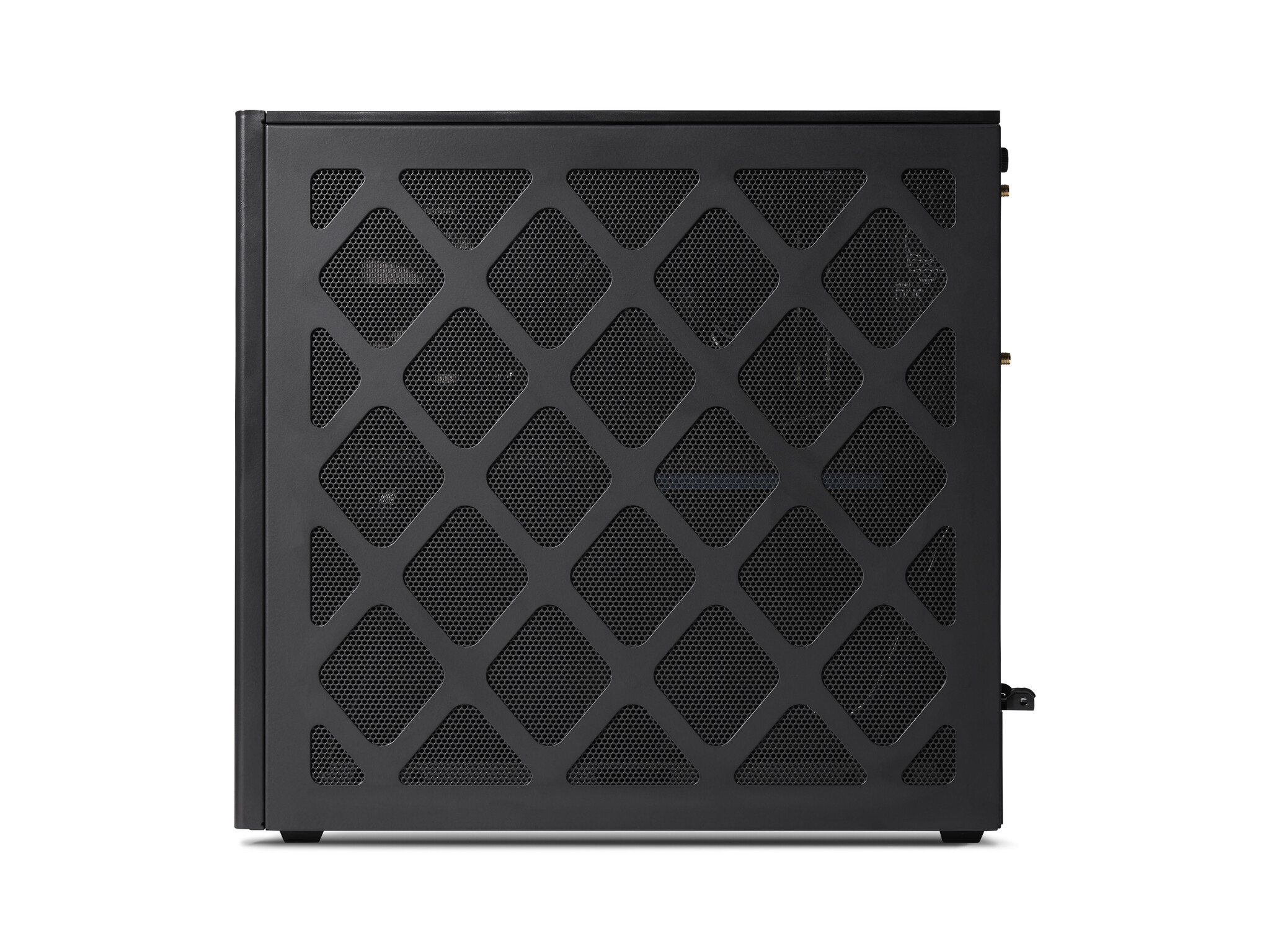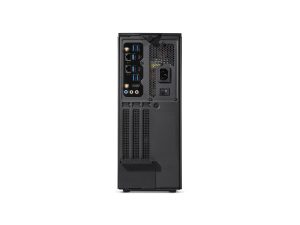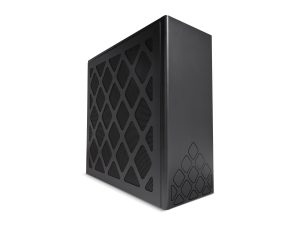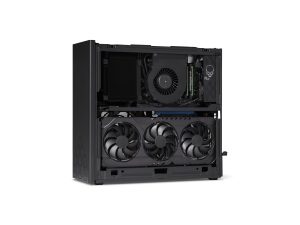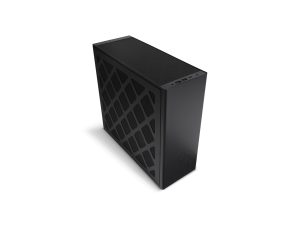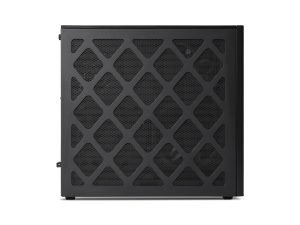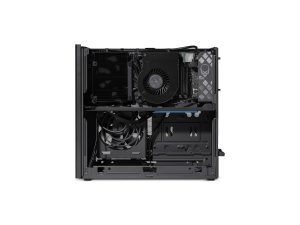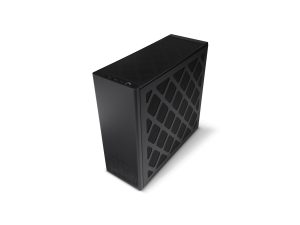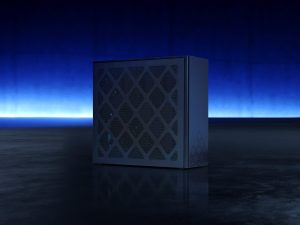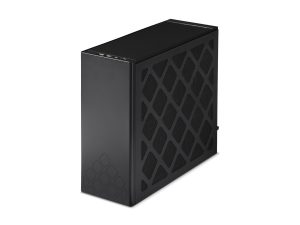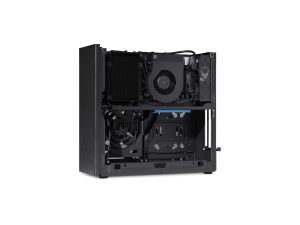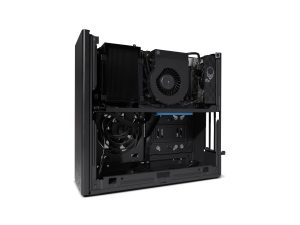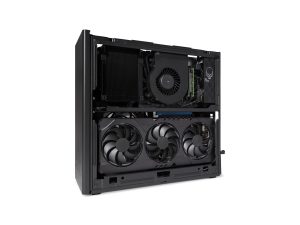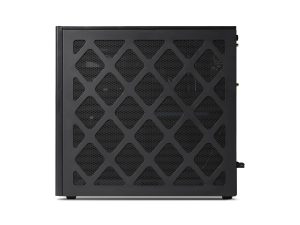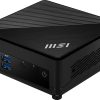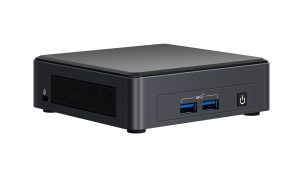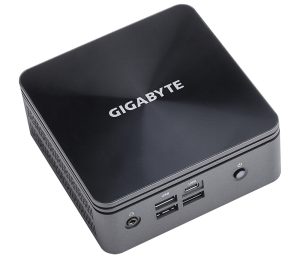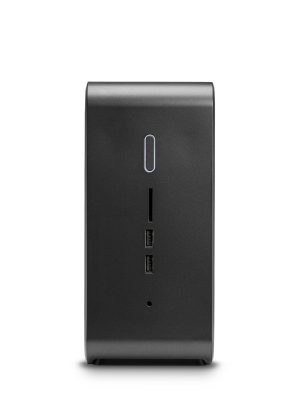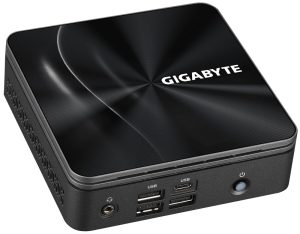Intel NUC 13 Extreme Kit – NUC13RNGi7 Desktop Sort Intel Z690 LGA 1700 i7-13700K
15.180,00 kr. inkl. moms (ex. moms 12.144,00 kr.)
Nuc13Rngi7 Desktop Black
Ikke på lager
Giv mig besked når varen kan købes

Intel® Virtualization Technology for Directed I/O (VT-d)
Intel® Virtualization Technology for Directed I/O (VT-d) continues from the existing support for IA-32 (VT-x) and Itanium® processor (VT-i) virtualization adding new support for I/O-device virtualization. Intel VT-d can help end users improve security and reliability of the systems and also improve performance of I/O devices in virtualized environments.
Intel® Virtualization Technology (VT-x)
Intel® Virtualization Technology (VT-x) allows one hardware platform to function as multiple “virtual” platforms. It offers improved manageability by limiting downtime and maintaining productivity by isolating computing activities into separate partitions.
Intel® AES New Instructions
Intel® AES New Instructions (Intel® AES-NI) are a set of instructions that enable fast and secure data encryption and decryption. AES-NI are valuable for a wide range of cryptographic applications, for example: applications that perform bulk encryption/decryption, authentication, random number generation, and authenticated encryption.
Max Turbo Frequency
Max Turbo Frequency is the maximum single-core frequency at which the processor is capable of operating using Intel® Turbo Boost Technology and, if present, Intel® Turbo Boost Max Technology 3.0 and Intel® Thermal Velocity Boost. Frequency is typically measured in gigahertz (GHz), or billion cycles per second.
Intel® Rapid Storage Technology
Intel® Rapid Storage Technology provides protection, performance, and expandability for desktop and mobile platforms. Whether using one or multiple hard drives, users can take advantage of enhanced performance and lower power consumption. When using more than one drive the user can have additional protection against data loss in the event of hard drive failure. Successor to Intel® Matrix Storage Technology.
Integrated Graphics
Integrated graphics allow for incredible visual quality, faster graphic performance and flexible display options without the need for a separate graphics card.
Intel® Optane™ Memory Supported
Intel® Optane™ memory is a revolutionary new class of non-volatile memory that sits in between system memory and storage to accelerate system performance and responsiveness. When combined with the Intel® Rapid Storage Technology Driver, it seamlessly manages multiple tiers of storage while presenting one virtual drive to the OS, ensuring that data frequently used resides on the fastest tier of storage. Intel® Optane™ memory requires specific hardware and software configuration.
RAID Configuration
RAID (Redundant Array of Independent Disks) is a storage technology that combines multiple disk drive components into a single logical unit, and distributes data across the array defined by RAID levels, indicative of the level of redundancy and performance required.
Intel® Platform Trust Technology (Intel® PTT)
Intel® Platform Trust Technology (Intel® PTT) is a platform functionality for credential storage and key management used by Windows 8* and Windows® 10. Intel® PTT supports BitLocker* for hard drive encryption and supports all Microsoft requirements for firmware Trusted Platform Module (fTPM) 2.0.
| Vægt | 1,0000 kg |
|---|---|
| Indbygget processer | Ja |
| Brand | Intel |
| State | Default |
| Processorproducent | Intel |
| Processorserie | Intel® Core™ i7 |
| Processormodel | i7-13700K |
| Processorkerner | 16 |
| Processortråde | 24 |
| Processor boost frekvens | 5,4 GHz |
| Processor-cache | 30 MB |
| Thermal Design Power (TDP) | 125 W |
| CPU-konfiguration (maks.) | 1 |
| Hukommelses slots type | SO-DIMM |
| Antal hukommelsesstik | 2 |
| Maksimal intern hukommelse | 64 GB |
| Understøttede hukommelsestyper | DDR-SDRAM |
| Hukommelseskanaler | To-kanals |
| Fejlkorrigerende kode | Ingen |
| Understøttet datalagringsdrev typer | HDD & SSD |
| Understøttede lagerdisk størrelser | M.2,2.5 |
| Grænseflade til lagerdisk | PCI Express, Serial ATA III |
| Antal understøttede lagerdiske | 5 |
| On-board grafikkort | Ja |
| Grafikadapter familie | Intel |
| On-board grafikkort, model | Intel UHD Graphics 770 |
| Antal understøttede skærme | 3 |
| Ethernet LAN | Ja |
| Wi-Fi | Ja |
| Bedste Wi-Fi standard | Wi-Fi 6E (802.11ax) |
| Wi-Fi-standarder | Wi-Fi 6E (802.11ax) |
| WLAN-controller model | Killer Wi-Fi 6E AX1690 |
| Bluetooth | Ja |
| Antal USB 3.2 Gen 1 (3.1 Gen 1) type-A-porte | 2 |
| Antal HDMI-porte | 1 |
| Ethernet LAN-porte (RJ-45) | 2 |
| HDMI-version | 2.1 |
| Kombineret hovedtelefon/mikrofon-port | Ja |
| Antal SATA III-stik | 4 |
| M.2.-kortslot (trådløs) | Killer™ Wi-Fi 6E AX1690i |
| Antal USB-porte | 11 |
| PCI Express slots version | 5, 4.0 |
| Kabinettype | Desktop |
| Produktfarve | Sort |
| Produkttype | PC barebone |
| Tænd-/slukkontakt | Ja |
| LED-indikatorer | Ja |
| Slot til kabellås | Ja |
| Kabellåseslids type | Kensington |
| Certificering | IEC/EN/UL 60950-1IEC/EN/UL 62368-1FCC Part 15B/15C/15ECISPR/EN 55032/55024ICES-003VCCI 32BSMI CNS 13438KN 32/35AS/NZS CISPR 32EN 300 328EN 301 893EN 300 440EN 301 489-1/3/17EN 62311AS/NZS 4268AS/NZS 2772.2ARPANSA |
| Status | Launched |
| Produktfamilie | Intel NUC |
| Produktserie | Intel NUC kit |
| Produktkode navn | Raptor Canyon |
| Processor sokkel | LGA 1700 |
| Antal understøttede processorer | 1 |
| BIOS-type | EEPROM |
| Lyd-output kanaler | 7.1 kanaler |
| Kompatible operativsystemer | Windows 11 (64-bit) |
| Operativsystem installeret | Ingen |
| Automatiseret sporingssystem til vareklassificering (CCATS) | G157815L2 |
| Eksportkontrolklassisfikationsnummer (ECCN) | 5A992C |
| Indlejret tilgængelige muligheder | Ingen |
| Intel® Rapid Storage Teknologi | Ja |
| Intel® AES Nye Instruktioner (Intel® AES-NI) | Ja |
| Intel® Virtualization Technology for Directed I/O (VT-d) | Ja |
| Intel® VT-x with Extended Page Tables (EPT) | Ja |
| Intel® 64 | Ja |
| Idle status | Ja |
| Enhanced Intel SpeedStep Teknologi | Ja |
| Intel® Trusted Execution Teknologi | Ja |
| Udfør deaktivering af bit | Ja |
| Intel® Stabil Billede Platformsprogram (SIPP) | Ja |
| Intel® Platform Trust Technology (Intel® PTT) | Ja |
| Intel® Virtualization Technology (VT-x) | Ja |
| Harmoniseret systemkode (HS) | 8471500150 |
| Strømforsyningstype | Intern strømforsyning |
| Strømforsyning | 750 W |
| Driftstemperatur (T-T) | 0 – 35 °C |
| Opbevaringstemperatur (T-T) | -20 – 40 °C |
| Bredde | 129 mm |
| Dybde | 337 mm |
| Højde | 318 mm |
| Antal SATA stik | 4 |
| HDD-størrelse | 2.5" |
| Lanceringsdato | Q4'22 |
| Product family | NUC |
| Maksimal opløsning | 7680 x 4320 pixel |
| Mikrofonindgang | Ja |
| Udgange til hovedtelefoner | 1 |
| Understøttede Windows-operativsystemer | Windows 11 x64 |
| Antal strømforsyninger | 1 |
| L2-cache | 24 MB |
| Processorgeneration | 13th gen Intel® Core™ i7 |
| Antal USB 3.2 Gen 2 (3.1 Gen 2) type-A-porte | 6 |
| Antal USB 3.2 Gen 2 (3.1 Gen 2) type-C-porte | 1 |
| SSD-formfaktor | M.2 |
| Indbyggede højttaler(e) | Ingen |
| M.2-kortslot (opbevaring) | 2 via PCH + 1 via CPU (NVMe) |
| Understøttede Linux-operativsystemer | Ja |
| Intel® Optane™ Memory Ready | Ja |
| Strømledning inkluderet | Ja |
| RAID-niveauer | 0, 1 |
| Kølingstype | Aktiv |
| Thunderbolt 4 porte antal | 2 |
| Bundkort chipsæt | Intel Z690 |
| Bæredygtighedscertifikater | ENERGY STAR, RoHS |
| Introduction year | 2022 |
| Garantiperiode | 3 År |
